Cuando pensamos actualmente en el nombre "Disney", seguramente lo primero que pensamos es en esa empresa gigante que produce montones de películas taquilleras cada año. Sin embargo, en un inicio, todo empieza por una persona, Walt Disney, quien a través de sus primeras producciones lograría crear lo que es Disney y darle el prestigio que ha tenido desde hace casi un siglo.
Estas primeras producciones, propias de Walt, dieron vida y forma al estilo que la empresa ha buscado mantener durante todos estos años, películas como "Pinocho", "Blancanieves y los Siete Enanitos", "Dumbo", "La Cenicienta" y otros clásicos más. En estas películas podemos notar un nivel de detalle e imaginación que, si relacionamos además con la época en la que fueron realizadas, llegan a ser bastante interesantes.
Entre esas películas, hay una que ha logrado destacarse por su originalidad y su unicidad, así como por todas las emociones que logró transmitir y los avances tecnológicos que implementó tanto para su realización como para su visualización. Esta película es la famosa "Fantasia", estrenada en 1940 y todavía recordada a día de hoy como uno de los mayores clásicos de Disney.
When we think today of the name "Disney", surely the first thing we think of is that giant company that produces lots of blockbuster movies every year. However, in the beginning, it all starts with one person, Walt Disney, who through his first productions managed to create what Disney is and give it the prestige it has had for almost a century.
These first productions, Walt's own, gave life and shape to the style that the company has sought to maintain throughout the years, films such as "Pinocchio", "Snow White and the Seven Dwarfs", "Dumbo", "Cinderella" and other classics. In these movies we can notice a level of detail and imagination that, if we also relate them to the era in which they were made, become quite interesting.
Among those films, there is one that has managed to stand out for its originality and uniqueness, as well as for all the emotions it managed to convey and the technological advances it implemented both for its realization and its visualization. This film is the famous "Fantasia", released in 1940 and still remembered to this day as one of Disney's greatest classics.
Antes de empezar, quiero aclarar que en esta reseña mencionaré elementos que salen a lo largo de la película que si bien podrían considerarse spoilers por salir en partes adelantadas de la misma, realmente no chocan con la experiencia de la película, puesto que ésta no está centrada en una trama lineal, sino en múltiples situaciones que nada tienen que ver con giros de tuerca o revelaciones. Igualmente dejo aquí la advertencia.
Before I begin, I want to clarify that in this review I will mention elements that come out throughout the film that while they could be considered spoilers for coming out in advanced parts of the film, they do not really interfere with the experience of the film, since it is not centered on a linear plot, but on multiple situations that have nothing to do with twists and turns or revelations. I'll leave the warning here anyway.
Un ballet cinematográfico animado
El elemento que más caracteriza a Fantasia es que, a diferencia de la mayor parte del cine animado occidental, esta película no está centrada en una historia lineal en sí, sino que se divide en 7 secuencias bastante diferentes entre ellas, cada una acompañada por una pieza sinfónica clásica, pues la intención principal de Fantasia es expresar visualmente las emociones experimentadas al escuchar diferentes composiciones musicales.
Para lograr este cometido y además hacerlo más digerible para un público infantil, la orquesta toma protagonismo en la película desde un inicio, pues lo primero que ve el público es precisamente a los músicos organizarse con sus instrumentos como si de un concierto se tratase, acto seguido, Deems Taylor se presenta como narrador para introducir al espectador en la obra, explicando desde un inicio lo que será visto en Fantasia. Posteriormente podemos ver como primer segmento de la obra, una serie de colores y luces formando imágenes alrededor del director de la orquesta, Leopold Stokowski, y al resto de la misma, todo al ritmo de un arreglo orquestal de la "Tocata y Fuga en Re Menor" de Johann Sebastian Bach, para acabar ilustrando imágenes del cielo y montañas que siguen la música. Con este primer segmento diseñado especialmente para preparar al espectador para lo que está por ver (Como digno primer acto que es, aún sin tratarse de una trama en sí).
El resto del filme es acompañado por otras composiciones clásicas, tales como diferentes partes de "El Cascanueces" de Piotr Ilich Tchaikovsky, ilustrado por una danza de hadas y otras criaturas en un bosque, la Consagración de la Primavera de Igor Stravinski ilustrada por una secuencia de escenas que muestran la formación de la Tierra, la sexta sinfonía de Beethoven ilustrada por un conjunto de criaturas mitológicas y dioses griegos en el olimpo, y otras más.
An animated cinematic ballet
The element that most characterizes Fantasia is that, unlike most occidental animated films, this film is not focused on a linear story itself, but is divided into 7 sequences quite different from each other, each accompanied by a classical symphonic piece, since the main intention of Fantasia is to visually express the emotions experienced when listening to different musical compositions.
To achieve this goal and also to make it more digestible for a child audience, the orchestra takes center stage in the film from the beginning, because the first thing the audience sees is precisely the musicians organizing themselves with their instruments as if it were a concert, then Deems Taylor is presented as a narrator to introduce the viewer in the work, explaining from the beginning what will be seen in Fantasia. Later we can see as the first segment of the work, a series of colors and lights forming images around the conductor of the orchestra, Leopold Stokowski, and the rest of it, all to the rhythm of an orchestral arrangement of the "Toccata and Fugue in D Minor" by Johann Sebastian Bach, to finish illustrating images of the sky and mountains that follow the music. With this first segment specially designed to prepare the viewer for what is to come (as a worthy first act that it is, even without being a plot itself).
The rest of the film is accompanied by other classical compositions, such as different parts of Pyotr Ilich Tchaikovsky's "The Nutcracker" illustrated by a dance of fairies and other creatures in a forest, Igor Stravinsky's "The Rite of Spring" illustrated by a sequence of scenes showing the formation of the Earth, Beethoven's sixth symphony illustrated by a set of mythological creatures and Greek gods on Olympus, and others.
Grandes secuecias memorables
Entre estas diferentes secuencias en los que se divide la película, hay dos que considero los más resaltables de la misma, siendo éstos "El aprendiz de brujo" y "Una noche en el monte calvo / Ave María".
El primero de ellos es, de hecho, uno de los mayores clásicos en la historia de Disney, referenciado una infinidad de veces a lo largo de los años. En él, vemos una adaptación animada del poema homónimo del autor alemán Johann Wolfgang von Goethe, musicalizado a su vez por la pieza del mismo nombre, del compositor francés Paul Dukas (La pieza en sí está basada en el poema alemán). En esta adaptación tenemos como protagonista al emblemático ratón Mickey Mouse (el cual debe su popularidad y su éxito a esta película, pues aunque ya había tenido apariciones en cortometrajes animados, ninguno había generado el impacto que Walt quería lograr con él).
En esta historia, Mickey, el aprendiz del poderoso brujo Yen Sid, intenta encantar por su cuenta una escoba para realizar la tarea de llevar agua de una fuente a un pozo. Mientras tanto, Mickey se queda dormido y en su descuido, el lugar se inunda por la cantidad de agua traída por la escoba, despertando a Mickey, quien ni siquiera sabe cómo terminar el hechizo, por lo que intenta cortar la escoba con un hacha, haciendo más bien que ésta se multiplique. Esta secuencia fue tan exitosa que no sólo le dio un éxito inmenso al personaje de Mickey Mouse, sino que cosas tan sencillas como el sombrero del mago o las escobas con brazos se volvieron un ícono totalmente reconocible. La secuencia fue colocada también en "Fantasia 2000" (Secuela de Fantasia que hace homenaje a la primera por su sexagésimo aniversario) así como ha sido retransmitida individualmente en varias ocasiones (En mi caso, la primera vez que vi esta secuencia, fue en mis primeros años de infancia gracias a un VHS de cortos de Mickey Mouse que teníamos, en el que estaba incluído El aprendiz de brujo).
La segunda secuencia que mencioné, es la que acompaña a las piezas "Una noche en el monte calvo" y "Ave María". En esta secuencia vemos al temible demonio Chernabog recibir a las brujas y espíritus malignos que le buscan durante la Noche de Walpurgis, hasta que el acto es detenido por la luz y el sonar de las campanas de una procesión en las montañas. Esta secuencia destaca por la gran tensión que genera nada más con la música y sus imágenes, pues aún sin tratarse del desenlace de una trama líneal, logra ser el gran clímax de Fantasia. Desde el despertar de Chernabog y sus facciones, hasta su jugueteo con las criaturas, desde la representación del aquelarre a los aspectos de las brujas y los espíritus. Todo esto para finalmente culminar con la calma del "Ave María", los colores del alba en un paisaje tranquilizante con las montañas llenas de niebla y las luces de la procesión en la distancia.
Great memorable sequences
Among these different sequences in which the film is divided, there are two that I consider the most remarkable of it, being these "The Sorcerer's Apprentice" and "A Night on Bald Mountain / Ave Maria".
The first of these is, in fact, one of the greatest classics in Disney history, referenced countless times over the years. In it, we see an animated adaptation of the homonymous poem by the German author Johann Wolfgang von Goethe, musicalized in turn by the piece of the same name, by the French composer Paul Dukas (The piece itself is based on the German poem). In this adaptation we have as protagonist the emblematic mouse Mickey Mouse (who owes his popularity and success to this film, because although he had already had appearances in animated shorts, none had generated the impact that Walt wanted to achieve with him).
In this story, Mickey, the apprentice of the powerful sorcerer Yen Sid, tries to enchant on his own a broom to perform the task of carrying water from a fountain to a well. Meanwhile, Mickey falls asleep and in his carelessness, the place is flooded by the amount of water brought by the broom, waking Mickey, who doesn't even know how to finish the spell, so he tries to cut the broom with an axe, rather making it multiply. This sequence was so successful that it not only gave immense success to the Mickey Mouse character, but such simple things as the wizard's hat or brooms with arms became a totally recognizable icon. The sequence was also placed in "Fantasia 2000" (Sequel to Fantasia that pays homage to the first one for its sixtieth anniversary) as well as it has been rebroadcast individually on several occasions (In my case, the first time I saw this sequence, was in my early childhood years thanks to a VHS of Mickey Mouse shorts we had, in which The Sorcerer's Apprentice* was included).
The second sequence I mentioned, is the one that accompanies the pieces "A Night on Bald Mountain" and "Ave Maria". In this sequence we see the fearsome demon Chernabog receive the witches and evil spirits that seek him during the Walpurgis Night, until the act is stopped by the light and the ringing of the bells of a procession in the mountains. This sequence stands out for the great tension it generates just with the music and its images, because even without being the denouement of a linear plot, it manages to be the great climax of Fantasia. From the awakening of Chernabog and his factions, to his playfulness with the creatures, from the representation of the coven to the aspects of the witches and spirits. All this to finally culminate with the calm of the "Ave Maria", the colors of dawn in a soothing landscape with the mist-filled mountains and the lights of the procession in the distance.
En conclusión
Fantasia es una película que demuestra el potencial creativo de Walt Disney, con una obra totalmente alejada de cualquier fórmula de guión típica del cine estadounidense. Esta película también muestra una forma de conectar la imagen con el sonido para generar una atmósfera que Disney ha reutilizado en múltiples películas posteriormente (En lo personal, en varias ocasiones la película me recordó a la escena de los elefantes de color en "Dumbo", escena que de hecho considero bastante memorable y cargada de personalidad).
La forma en que la película decide centrarse en seguir la música y plasmar en imagen las emociones de la misma, es algo que considero no sólo una decisión ingeniosa por su originalidad, sino también por lo personal que se siente. Al menos en mi caso, durante mi preadolescencia fui miembro del sistema de orquestas de mi país en el área de la percusión, y al haber estado tantas horas sentado escuchando los ensayos de mi orquesta, recuerdo haberme dejado llevar en mi mente por la música en más de una ocasión. La sensación en sí puede ser algo compleja de describir, pero sin duda alguna, es lo que se vive en Fantasia. El primer segmento, dedicado a "Tocata y fuga en re menor" es un gran ejemplo de la sensación que busco expresar, con una serie de colores y luces generando imágenes al compás de la música.
Finalmente, Fantasia es una de las películas que más podría recomendar de este estudio, pero con el debido recordatorio de que es muy diferente a lo que se acostumbra ver en Disney y, en realidad, en toda la animación occidental. De decidir ver esta película, recomiendo hacerlo con calma y paciencia, pues es una cinta larga pero que vale la pena ver.
La película está disponible en Disney+ y, por razones que desconozco, está disponible también en inglés en Youtube en este enlace.
In conclusion
Fantasia is a film that demonstrates the creative potential of Walt Disney, with a work totally removed from any script formula typical of American cinema. This film also shows a way of connecting image with sound to generate an atmosphere that Disney has reused in multiple films subsequently (Personally, on several occasions the film reminded me of the colored elephant scene in "Dumbo", a scene that I actually consider quite memorable and loaded with personality).
The way in which the film decides to focus on following the music and capturing the emotions of the music in image, is something that I consider not only an ingenious decision because of its originality, but also because of how personal it feels. At least in my case, during my pre-teen years I was a member of my country's orchestra system in the percussion area, and having sat for so many hours listening to my orchestra's rehearsals, I remember being carried away in my mind by the music on more than one occasion. The feeling itself may be a bit complex to describe, but it is certainly what you experience in Fantasia. The first segment, dedicated to "Toccata and Fugue in D minor" is a great example of the feeling I am trying to express, with a series of colors and lights generating images in time with the music.
Finally, Fantasia is one of the films I could recommend the most from this studio, but with the due reminder that it is very different from what we are used to seeing in Disney and, in fact, in all occidental animation. If you decide to watch this film, I recommend you do so calmly and patiently, as it is a long but worthwhile film.
The movie is available on Disney+ and, for reasons unknown to me, it is also available on Youtube at this link.
This post was partially translated with DeepL Translate.
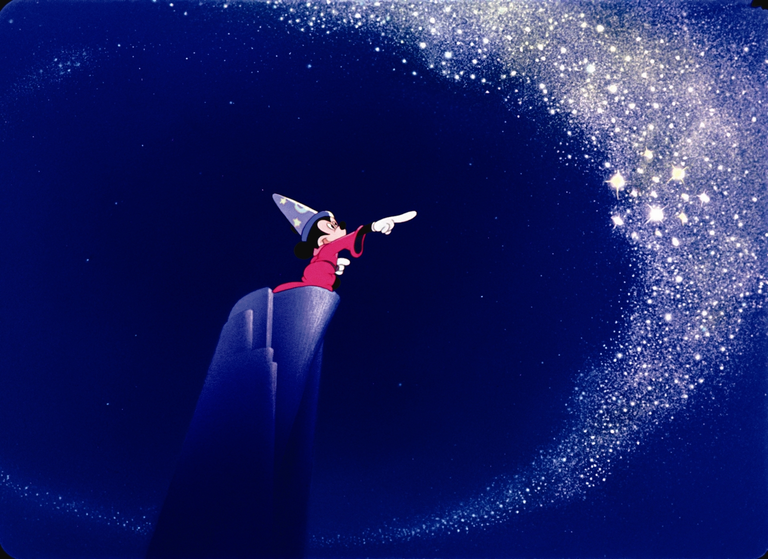
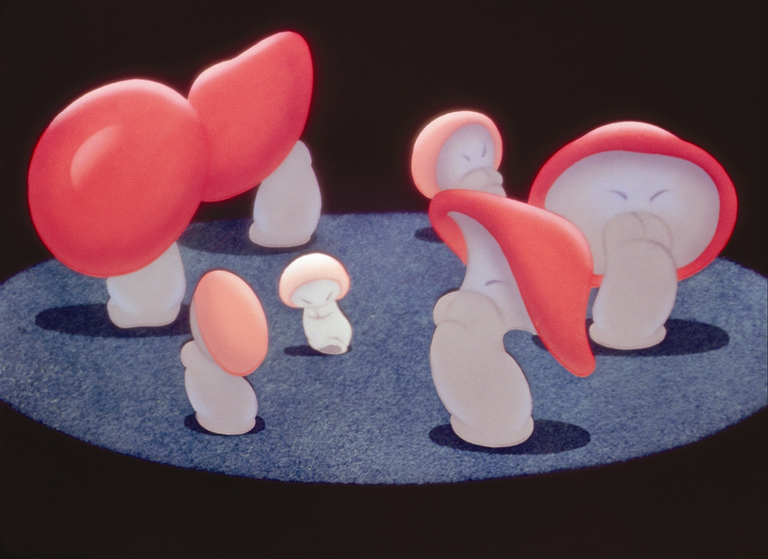
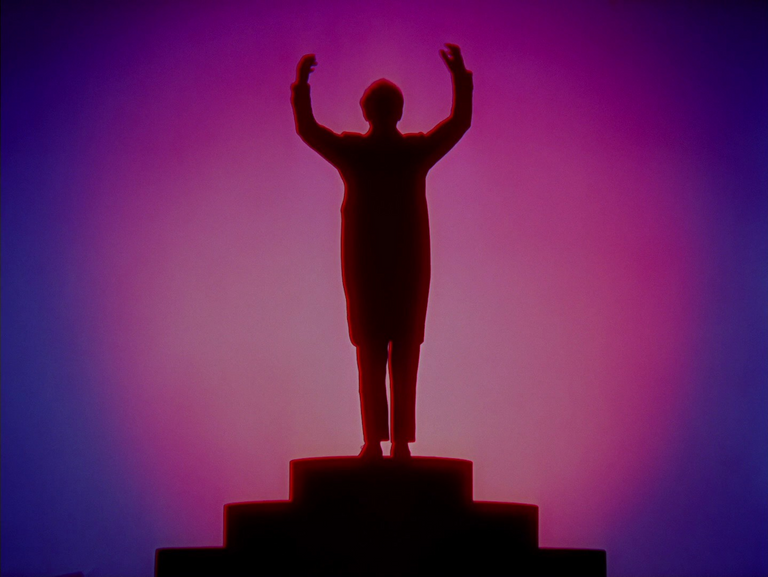
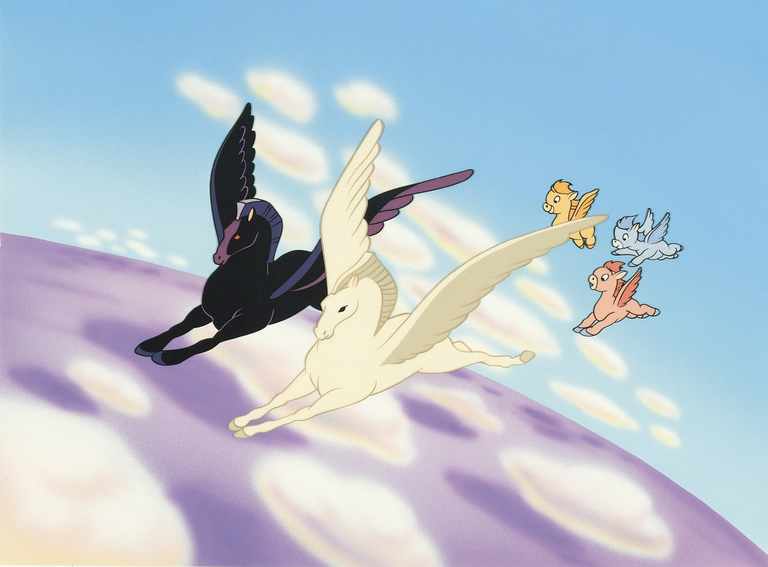
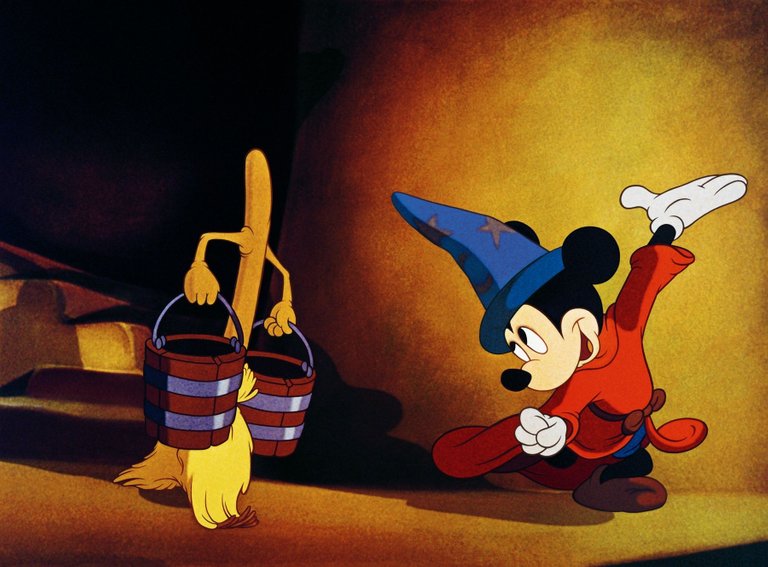
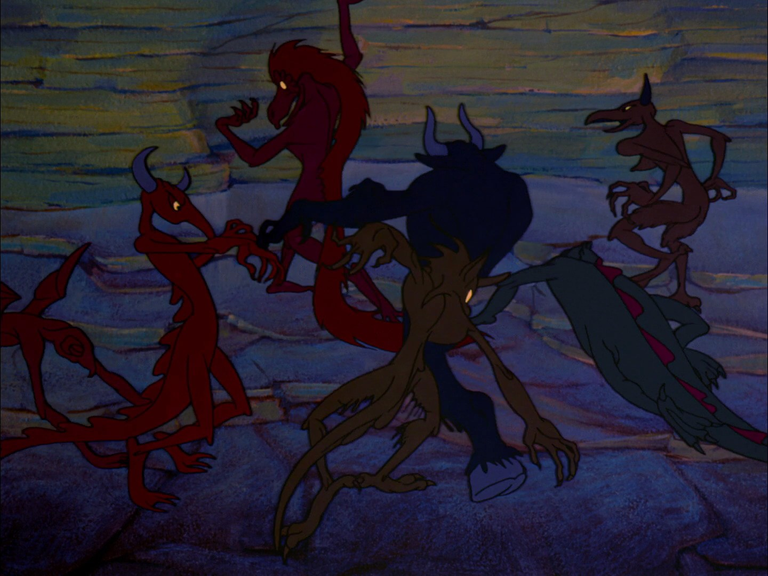
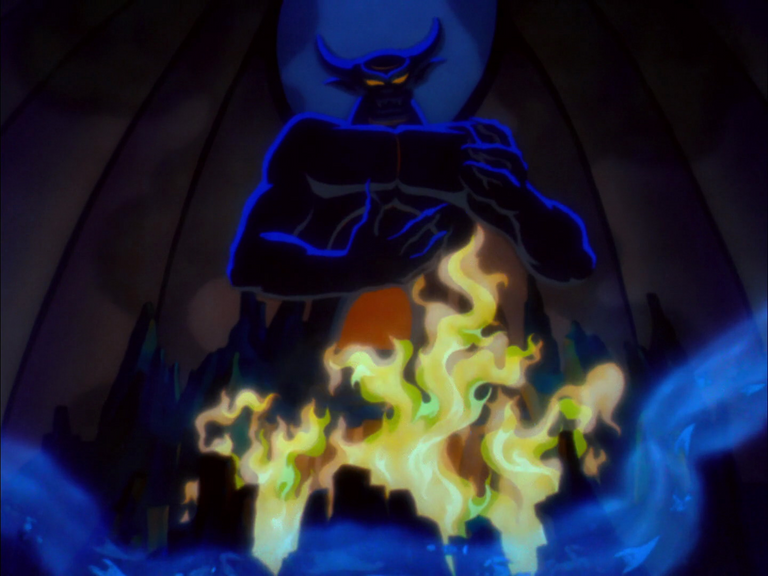
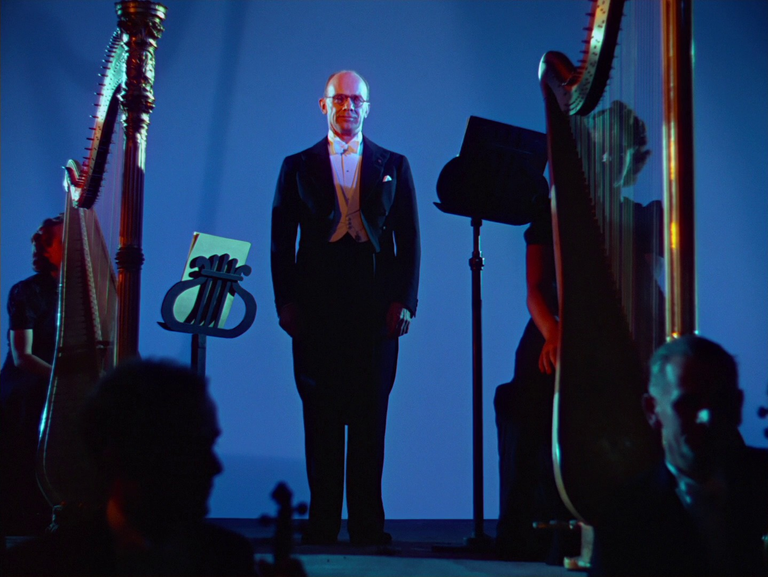
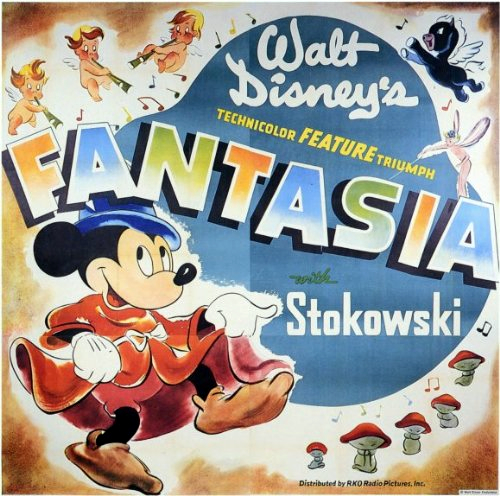
La vi cuando era un niño, por cierto, también en VHS que había en casa. Muy buenos recuerdos de la pelicula. en su momento me gusto mucho. Fantasia 2000 nunca la vi.
La época del VHS tuvo su encanto, las películas que tuve en ese formato las guardo en mi memoria con cariño. A Fantasia 2000 quizás le eche un vistazo eventualmente para hacerme una idea sobre ella.